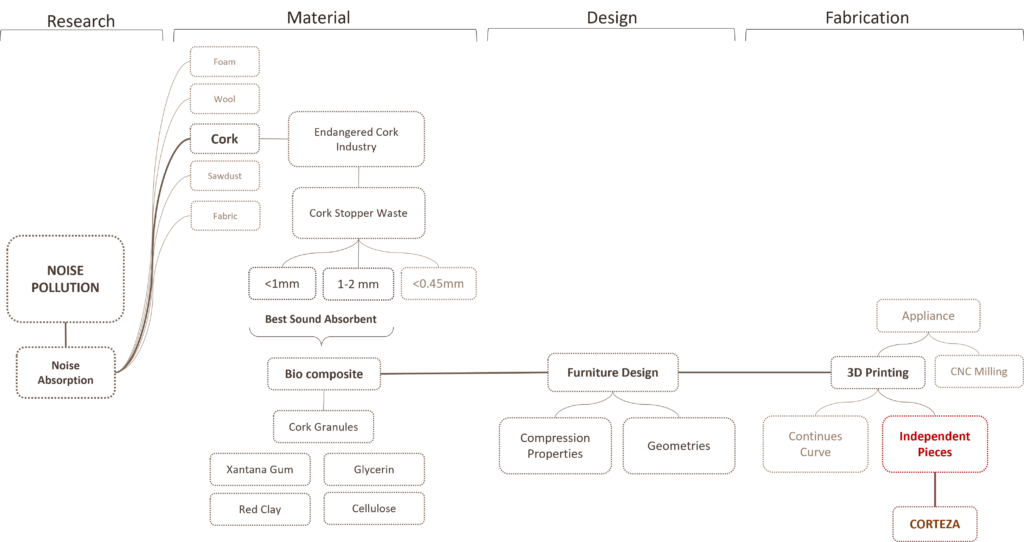Context
# Noise Pollution
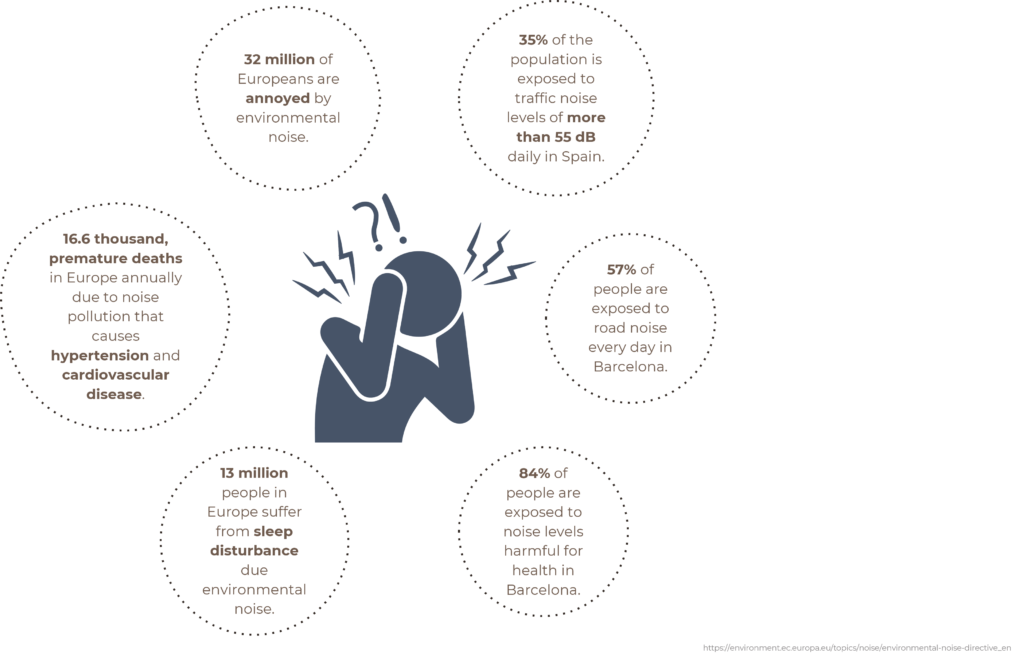
Noise pollution is considered to be any unwanted or disturbing sound that affects the health and well-being of humans and other organisms. And World Health Organization considers decibels over 65 dB noise pollution. Noise pollution is affecting everyone. For some people, its just an annoyance, but for others, it’s a serious health issue. For instance, annually, 16.6 thousand premature deaths in Europe is due to noise pollution, which causes hypertension and cardiovascular diseases.
# What’s the Project About
As the world continues to develop rapidly, the problem of noise pollution, especially in metropolitan cities, cannot be eliminated. Not only outside but also inside the old houses. “Corteza” is an experimental design proposal to tackle the noise pollution problem inside Barcelona’s buildings with 3D-printed natural cork furniture.
# Workflow
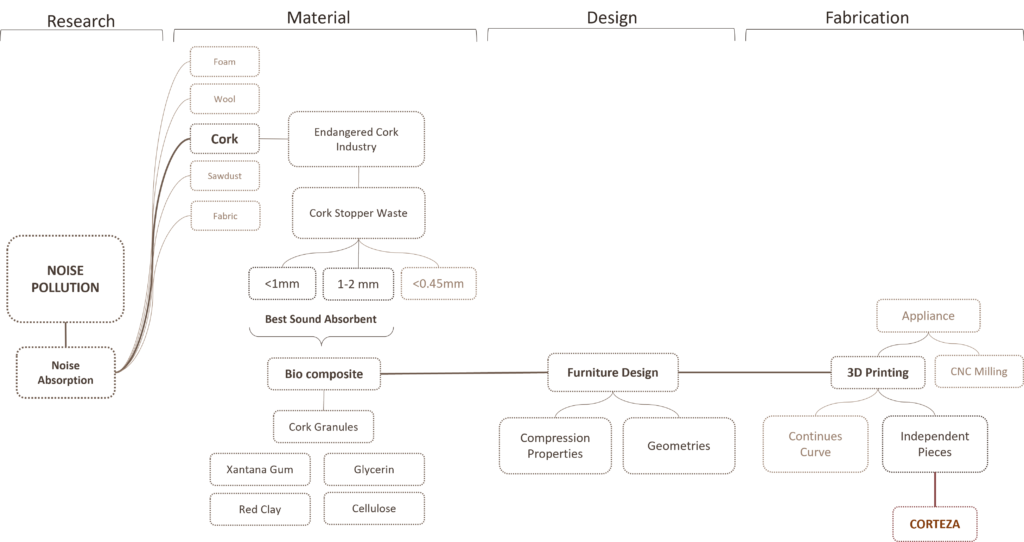
Understanding the Noise
# Sound Waves
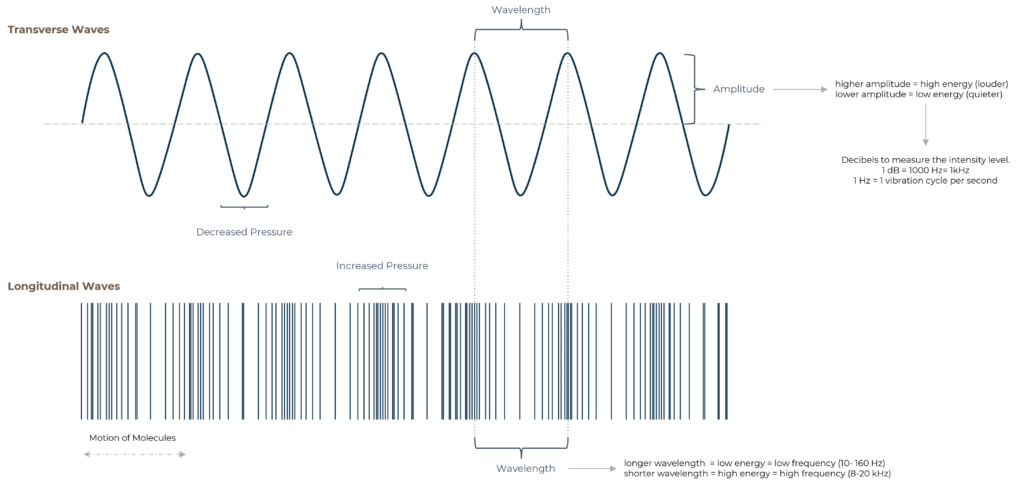
To Understand Noise first I examined how sound is measured. The decibel and frequency range. Frequency is the number of vibrations or cycles of sound per second measured in hertz. Decibels measure the strength of these vibrations, which is the amplitude.
Noise and Humans
# A Misophonists Noise Map
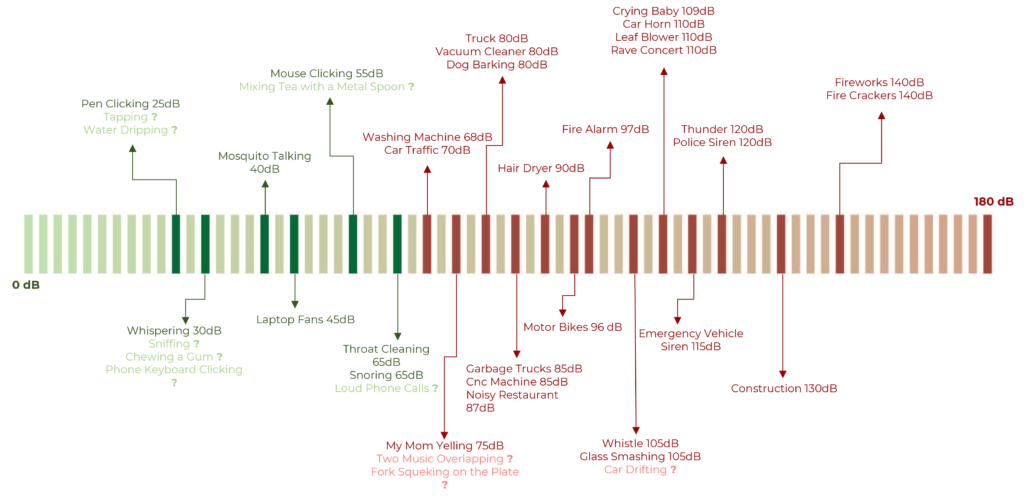
One of the main reasons I was dragged to this topic was that I’m a highly sensitive person when it comes to noise. I can even consider myself having Misophonia disorder. It’s a disorder in which certain sounds trigger emotional or physiological responses. Such as anxiety, rage and panic. And there are specific sounds that really do drive me crazy! And to understand the noise more personally, I wanted to make a chart of the noises that annoy me with their decibels. Such as pen clicking, which is 25 dB or crying baby, which is 109dB etc.
Understanding the Noise
# Decibel and Frequency Range
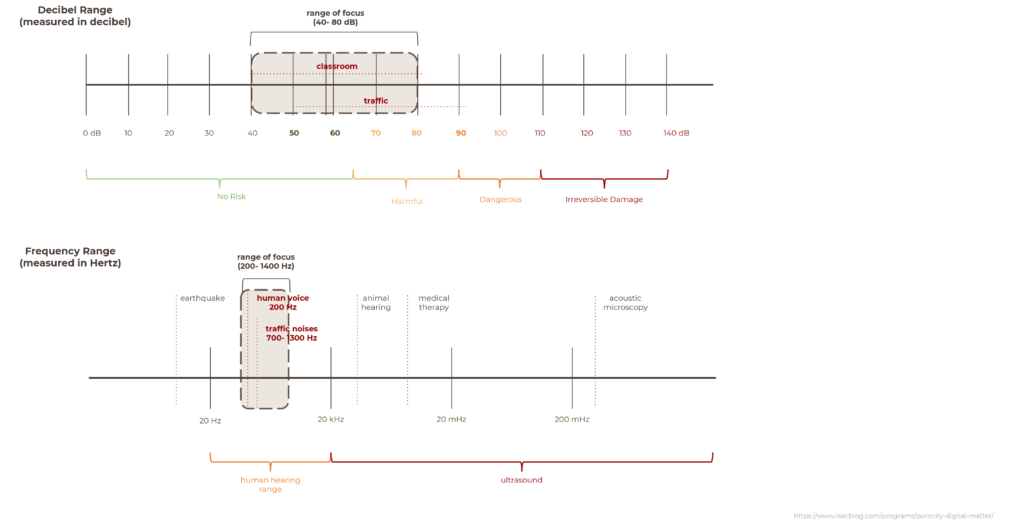
The range of focus for this project is traffic noises and the human voice, which ranges between 50 and 90 decibels or 200 to 1300 Hertz.
Noise and Humans
# Noise in the City
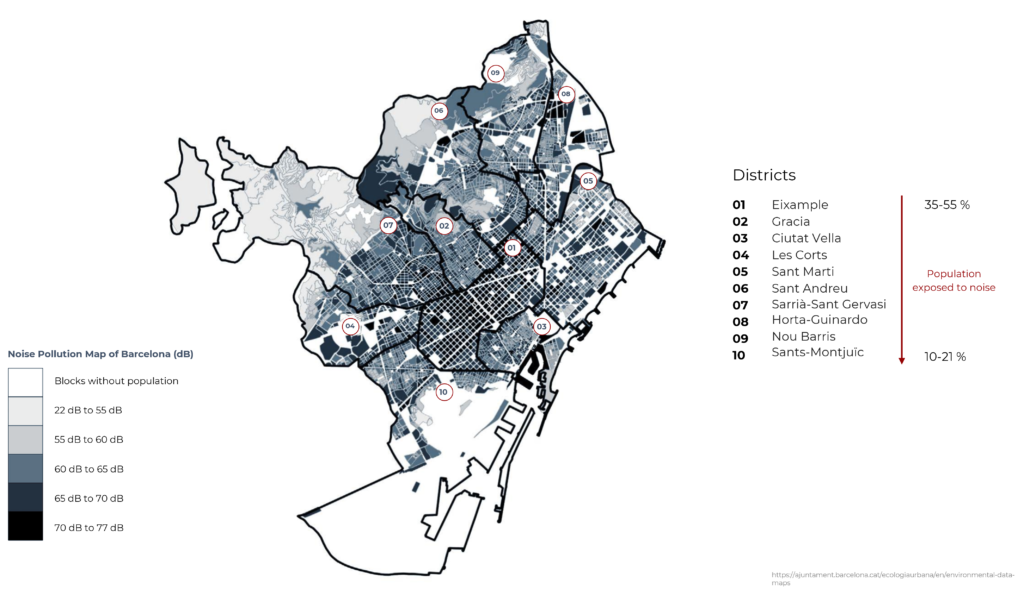
if we consider noises in Barcelona, the traffic noises are mostly through the Avinguda diagonal, gran, etc. Although the leisure activities such as protests, marches, and festivals are in Passage de Gracia, in Ramla,
# Focused Neighbourhood
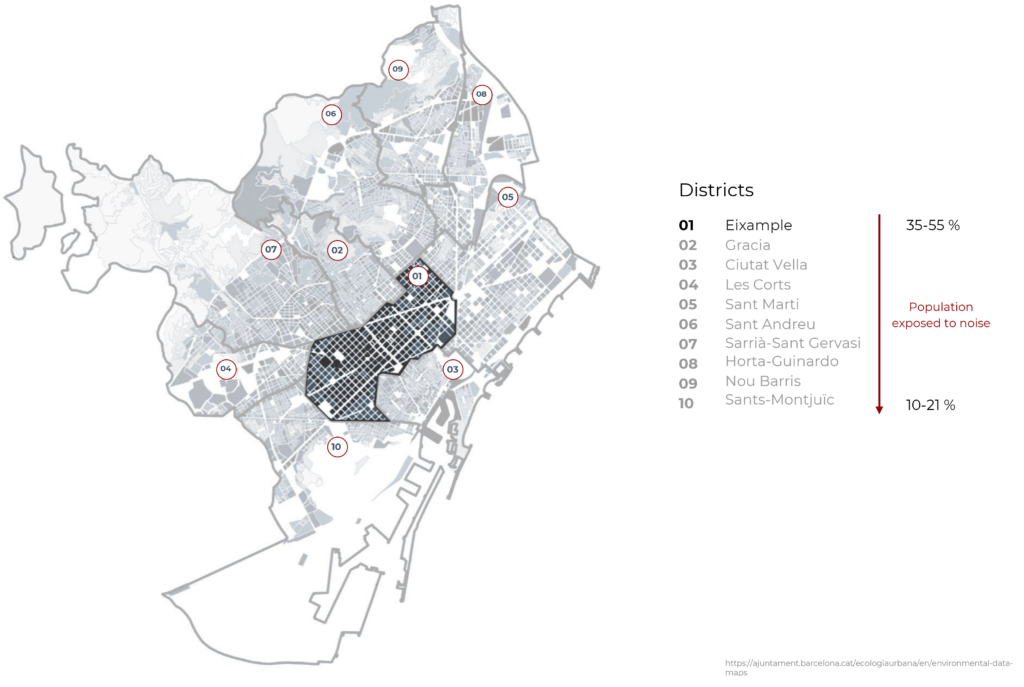
Throughout this thesis, we will be focusing on the Eixample district.
Sound and Surfaces
# How Sound Waves React

Sound waves reacts in 3 main ways. Reflection, absorption and transmission.
# How Sound Waves Move

When we look at how they react on different types of surfaces, is that on straight and corner surfaces, it reflects on convex surfaces it scatters in opposite directions. It concentrates the sound waves on concave surfaces by reflecting them to a common point. And on porous surfaces, it diffuses the sound.
Materials
# Natural Fibers and Their Sound Absorption Coefficients

Therefore according to those properties, the smoother the surface is, the more reflective they become. For instance, in glass, its sound absorption coefficient is 0.05, which is almost zero. Although cork is 0.7, which is quite high. So the more fibre, or pores, they have, the more absorbent they become.
Cork
# The World Cork Map
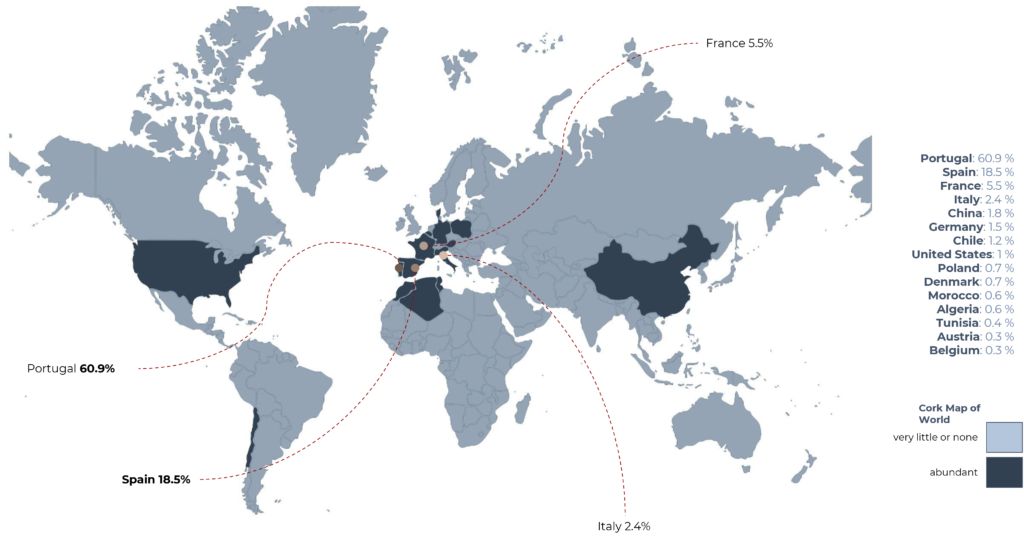
The main distributors of cork are Portugal and Spain.
# Properties
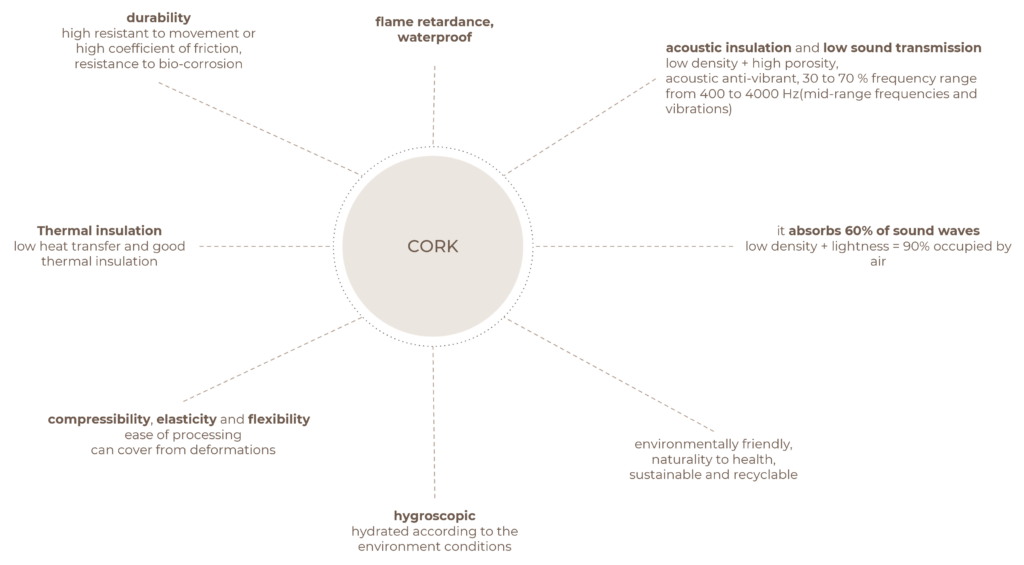
One of the benefits of using cork is that it has a low density and high porosity, which makes it great for mid-range frequencies. It has low density and lightness. Therefore, It absorbs almost 60 per cent of sound waves. It’s flexible, durable, waterproof and flame retardant.
# State of Art
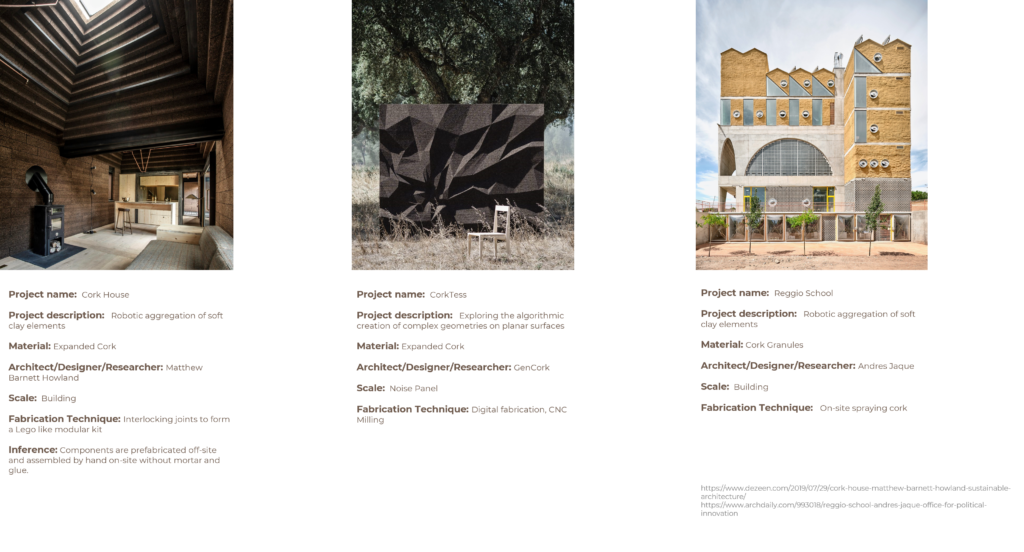
Above, there are some states of art for the usage of different cork types. In the cork house, expanded cork has been used. And during the process, no mortar or glue was needed because of the interlocking joint forms. The second, CorkTess, is a noise-absorbing panel off GenCork. They use CNC milling on expanded and agglomerated cork. Reggio School is a project of Andress Jaque. Basically, they used on-site spraying for the cork to increase bio growth.
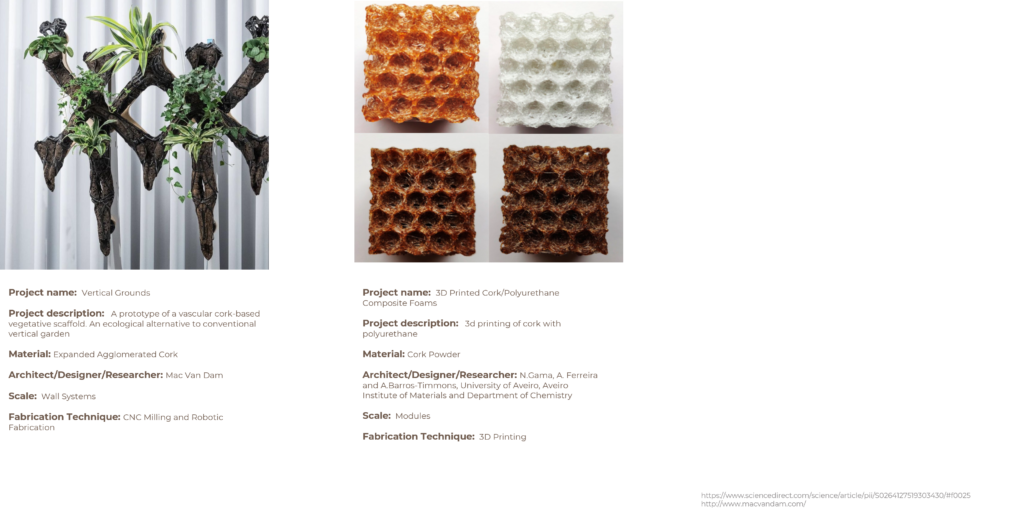
Vertical Grounds is a project of Mac Van Dam. He made a prototype of a vascular cork-based vegetative scaffold. And one of the only examples of 3d printing with cork without using cork filament is the research project of the University of Aveiro, Chemistry Department. They used cork powder and polyurethane mixture to 3d print small modules. The only problem with this project is that they only tested the durability of the modules, and the maximum usage of cork powder is 5 per cent, so it is quite small.
Material Experiments
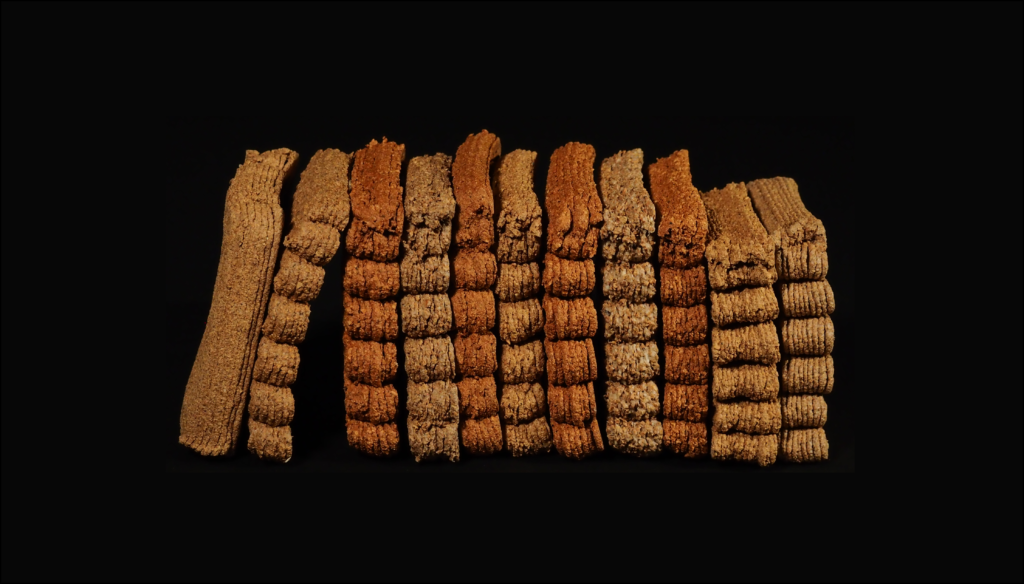
I had a chance to supply cork from ICSURO.
# Granule Experiment Units
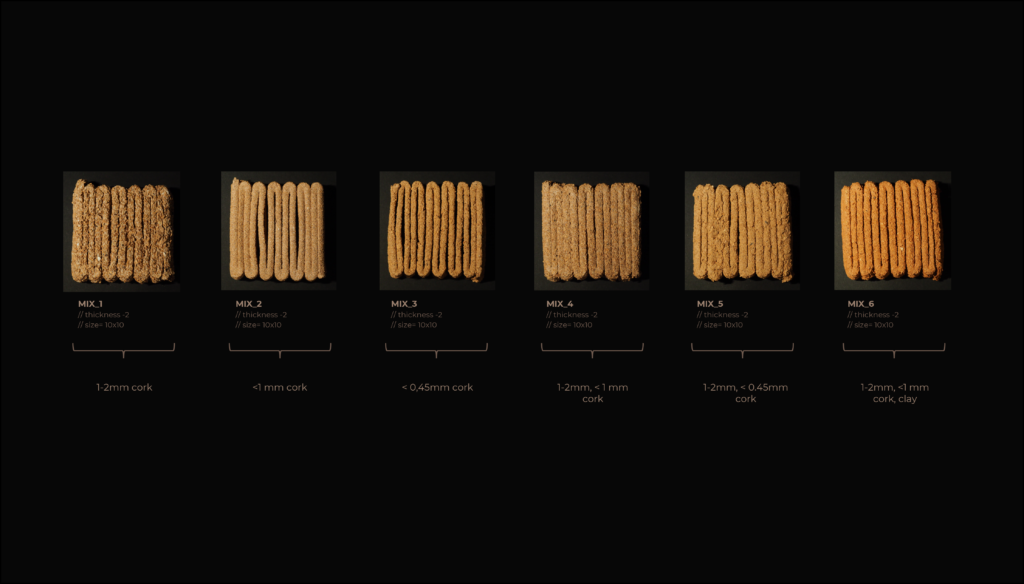
They were able to supply me with 3 different types of cork.
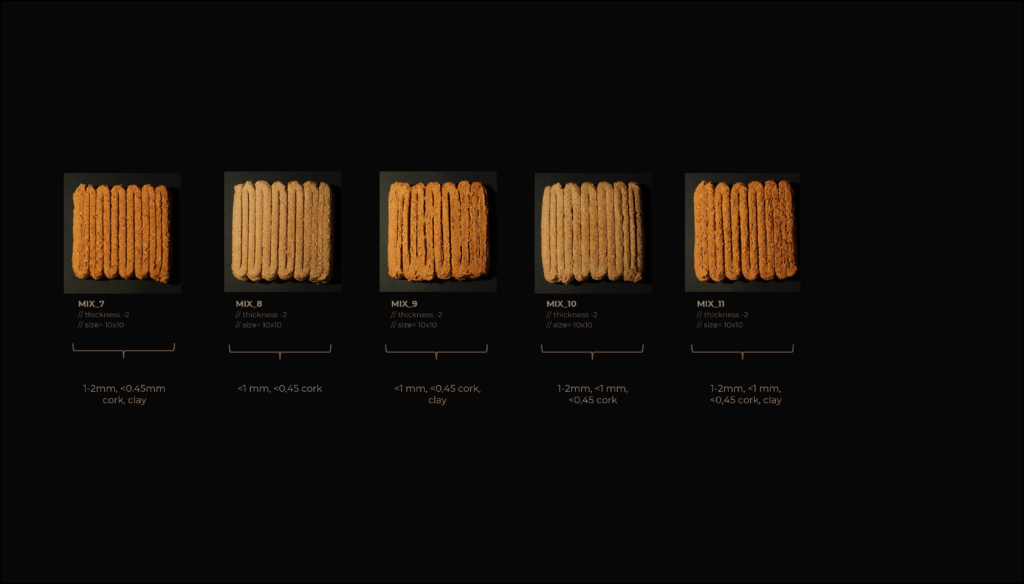
And I was able to test them acoustically and strength-wise.

When I was testing, I made an insulated box. And tested them one by one with material and without material just ble to explore the amount of decibels it reduces. And in this case, the material I’m using reduces up to 6 decibels.
# Natural Fibers and Their Sound Absorbtion Coefficiency
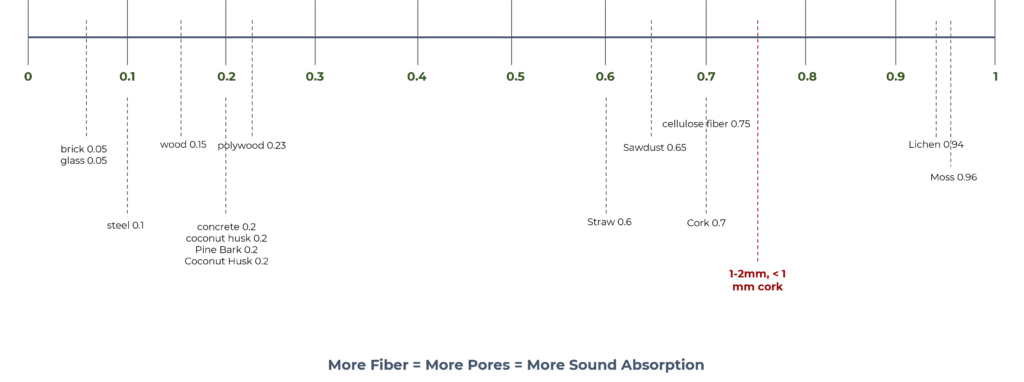
And If we check how it would be in coefficiency-wise, it would be approximately between 0.7 and 0.8
Acoustic Simulation
# Pachyderm House Simulation
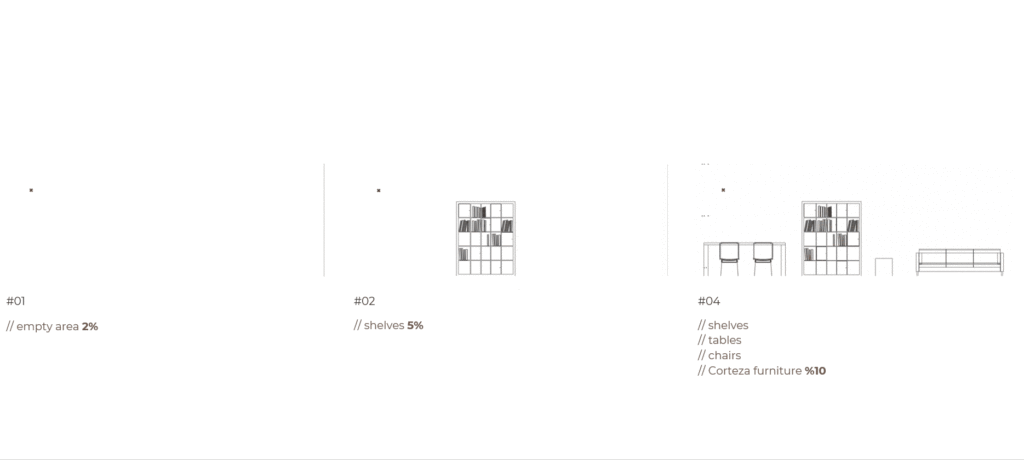
Materials
# Durability and Granules
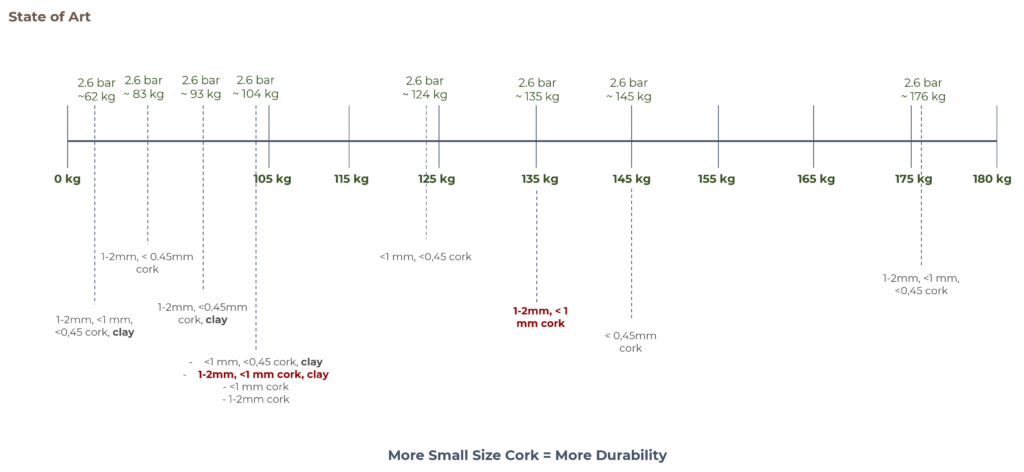
And then I check their durability test by making small pieces and pressure. And the material I’m using is up to 104 to 135 kg.
Material and Geometry Exploration
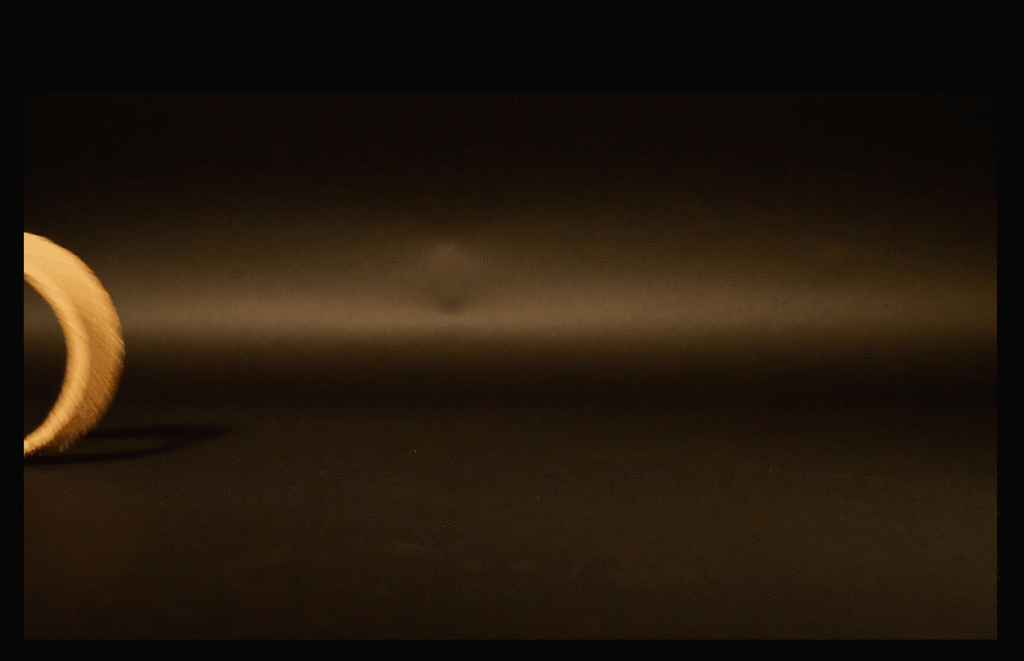
I made several pieces. Some were successful some weren’t.
# Failed 3D Prints
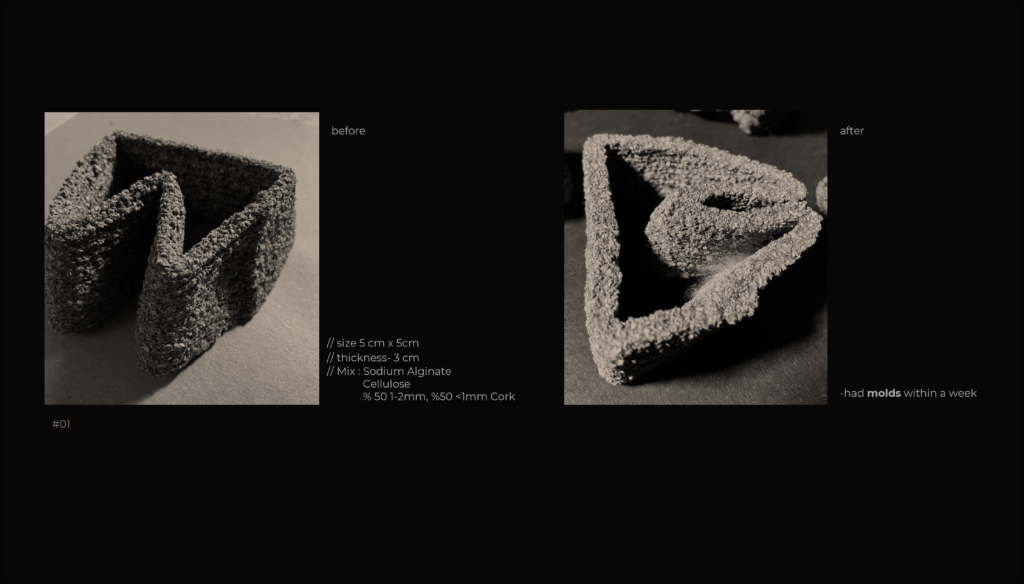
So first, I started with mould as usual. I used a mixture of sodium alginate and cellulose. And approximately within a week, they started to have white mould.
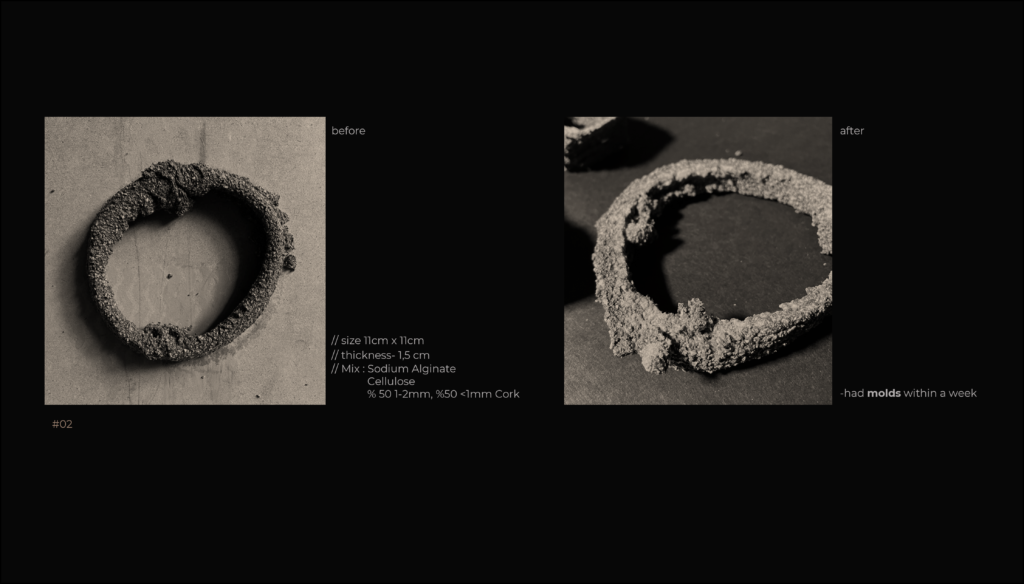
And ?n some cases the material didn’t even dried for so long.
# 3D Prints
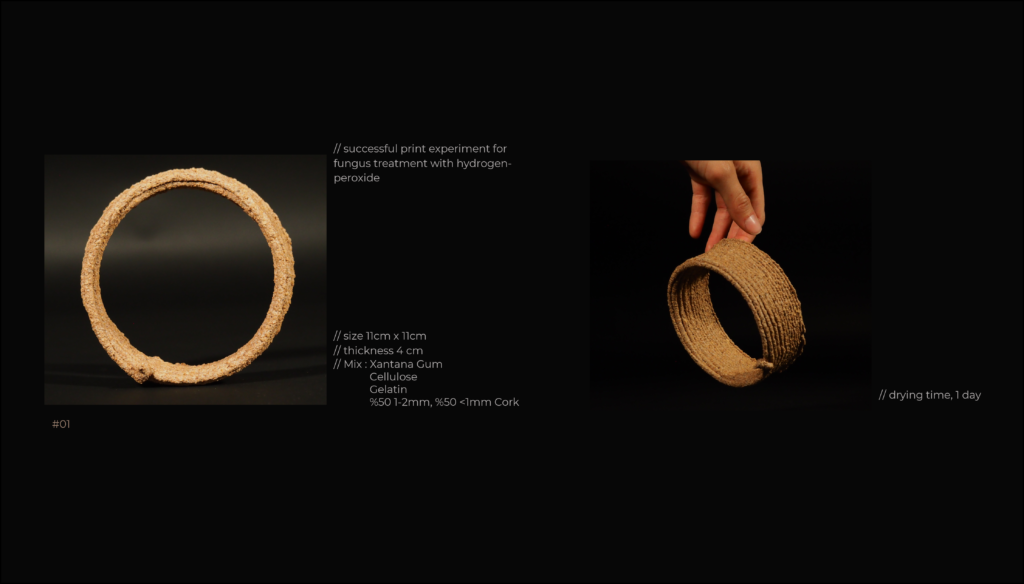
Then I started to change the recipe and, in addition, started to add hydrogen peroxide.
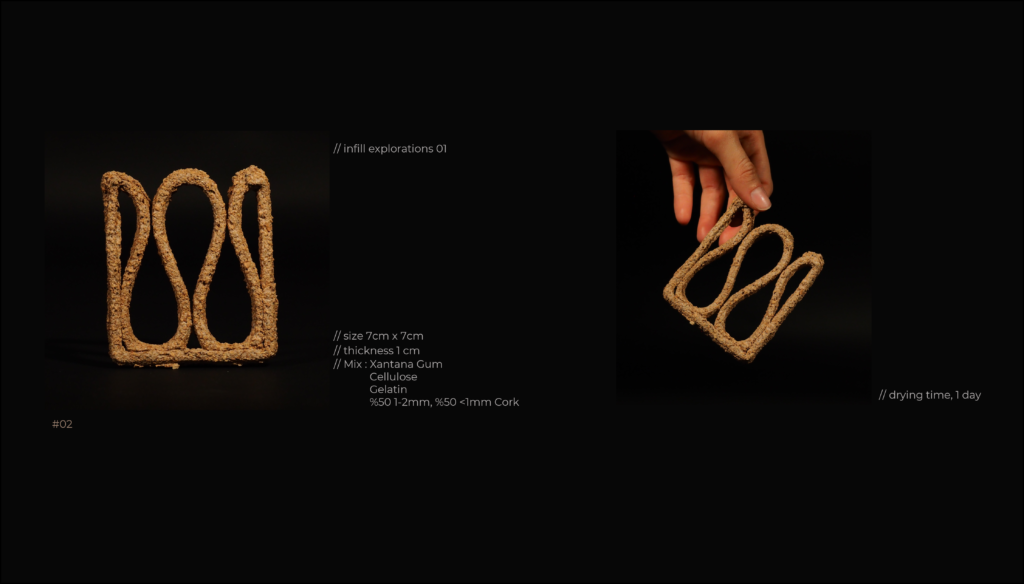
Since I was designing a piece of furniture, I went through some infill designs. In smaller scale
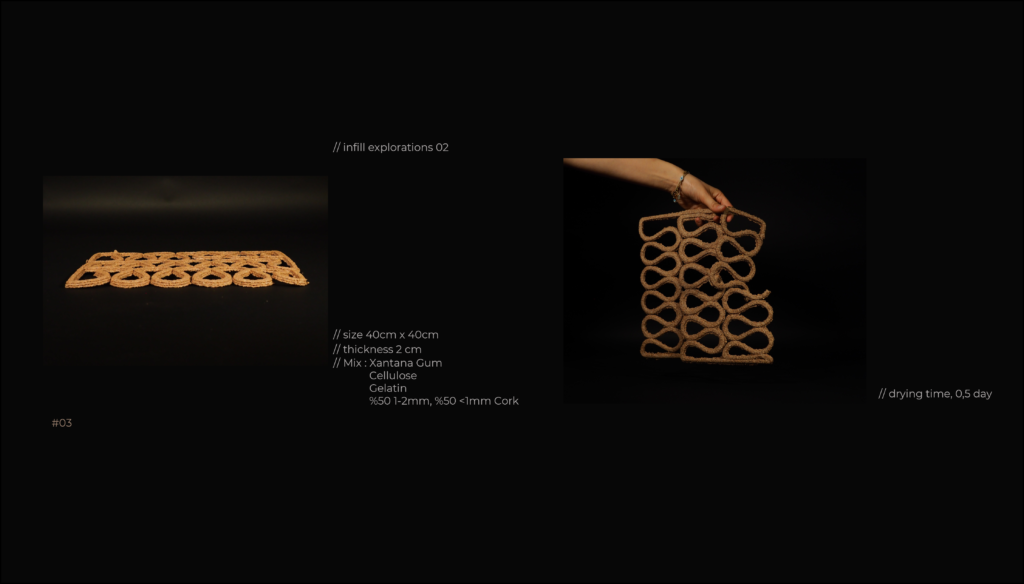
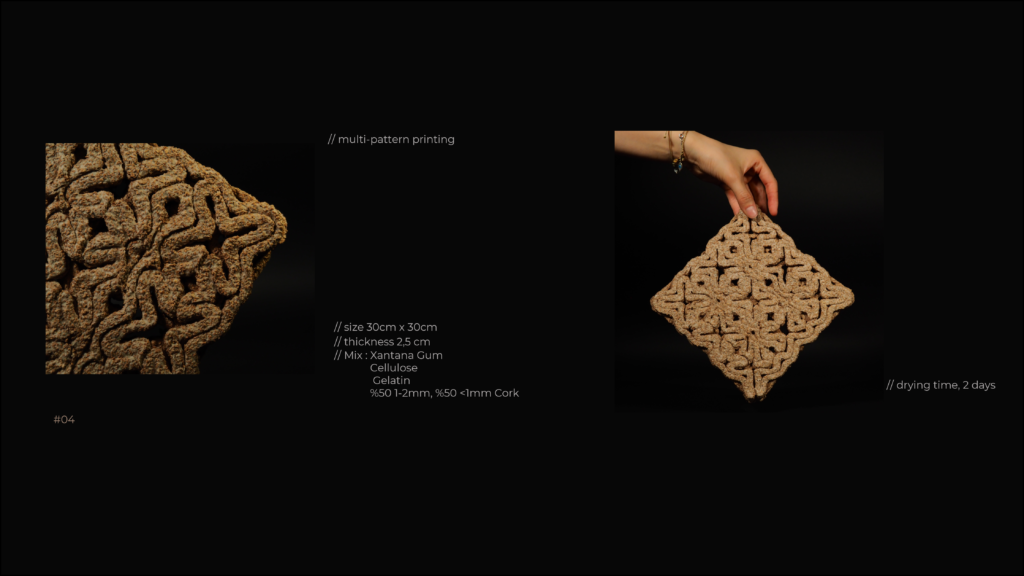
I started to test out multi-pattern printing. In that case, the aim was to create different gaps and pores and make the sound more absorbed inside the geometry. However, with 3d printing, the gaps in between became unpredictable. And I started to have fewer gaps between the patterns. So it didn’t turn out as I expected.
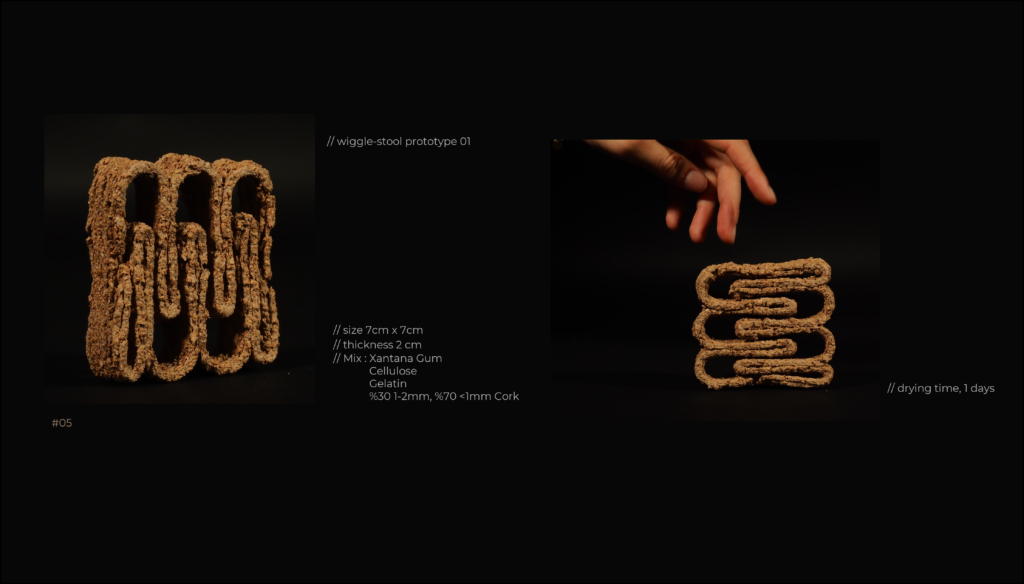
For design, I started with Frank Gery’s wiggle stool. In small scales with ender
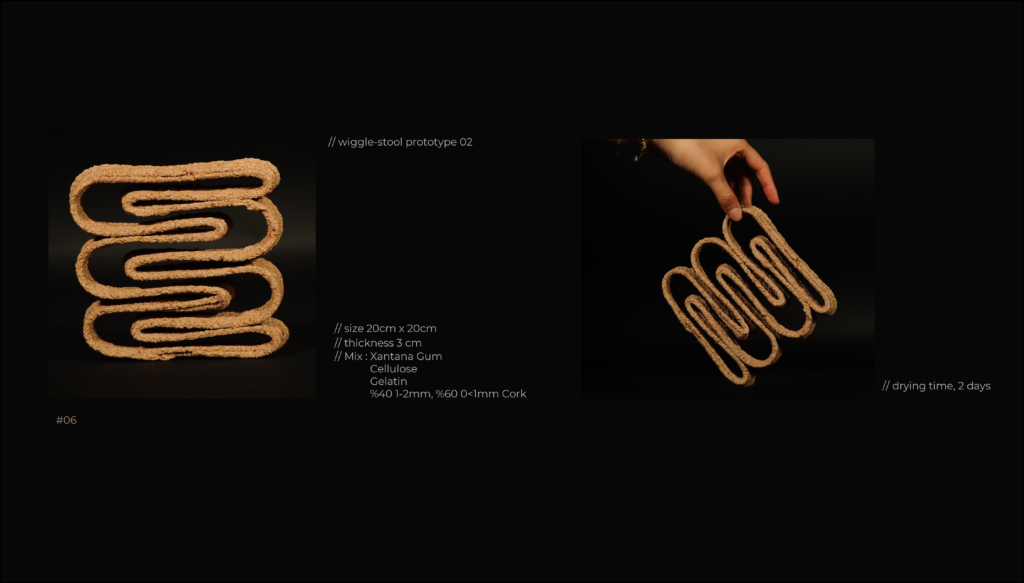
Also, on bigger scales.
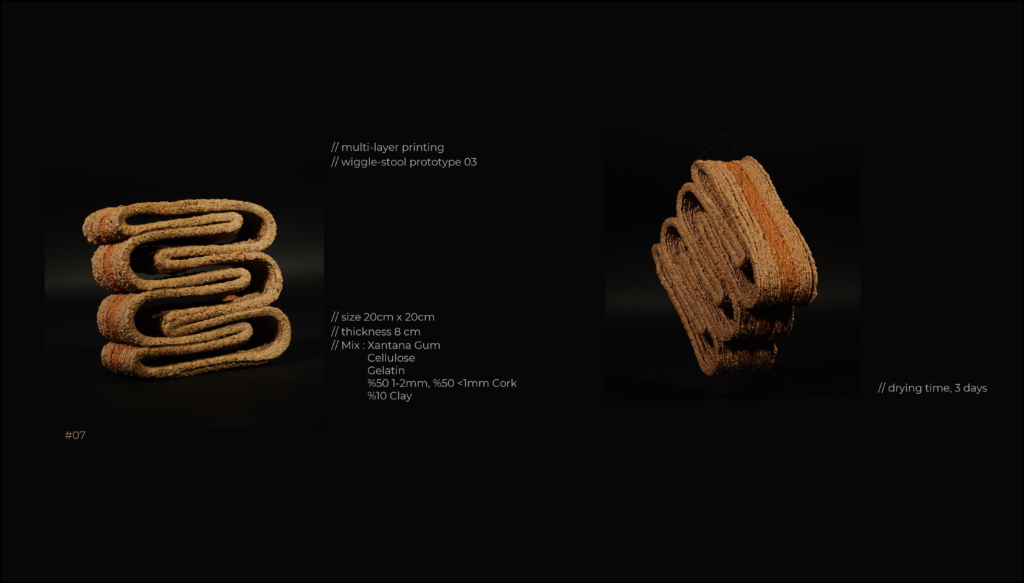
However, since the material was super small, I decided to add clay to give some weight.
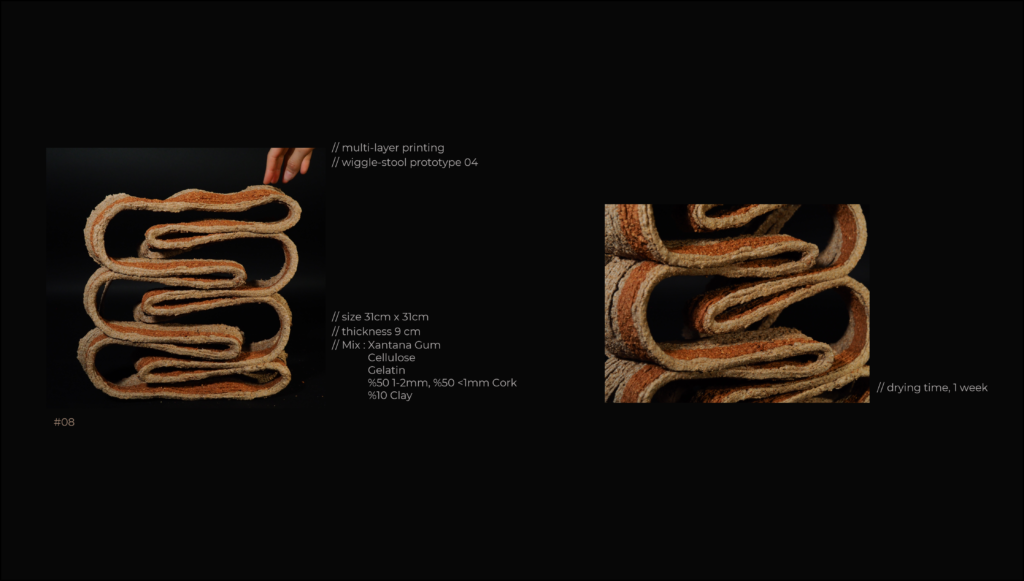
Although on the last one, we changed some parameters, and it printed as we wanted. You can feel the texture.
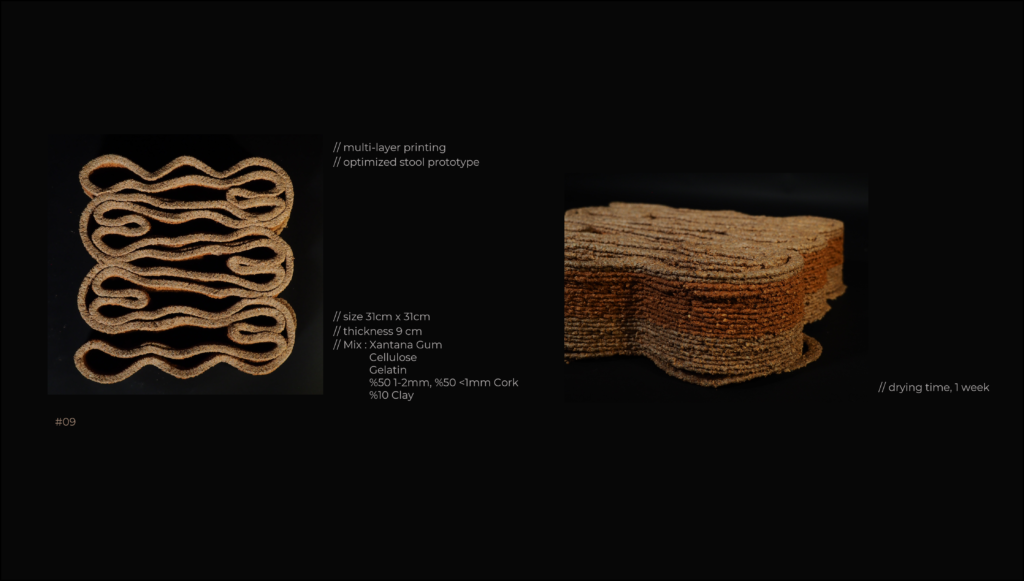
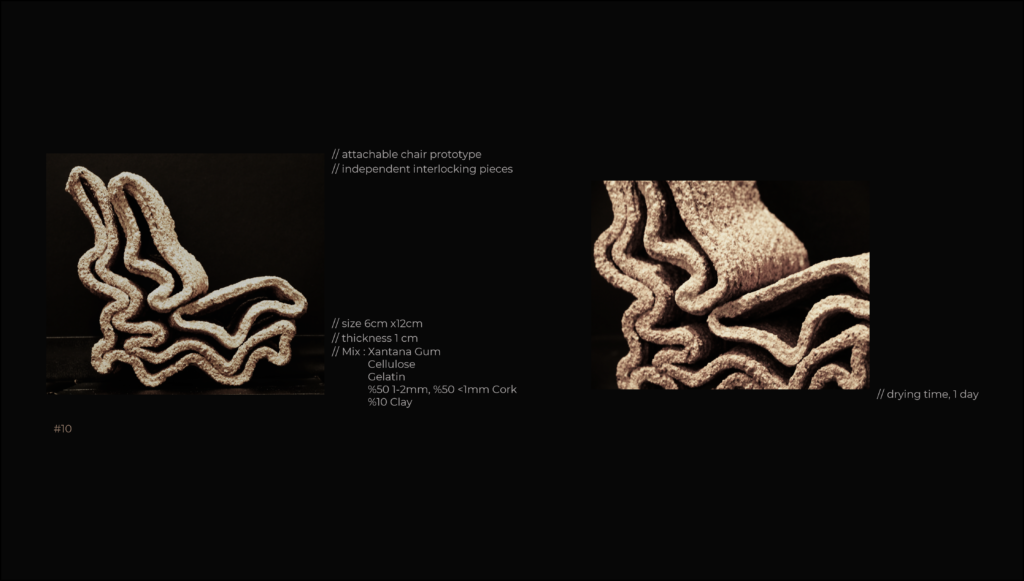
#Flexibility Test
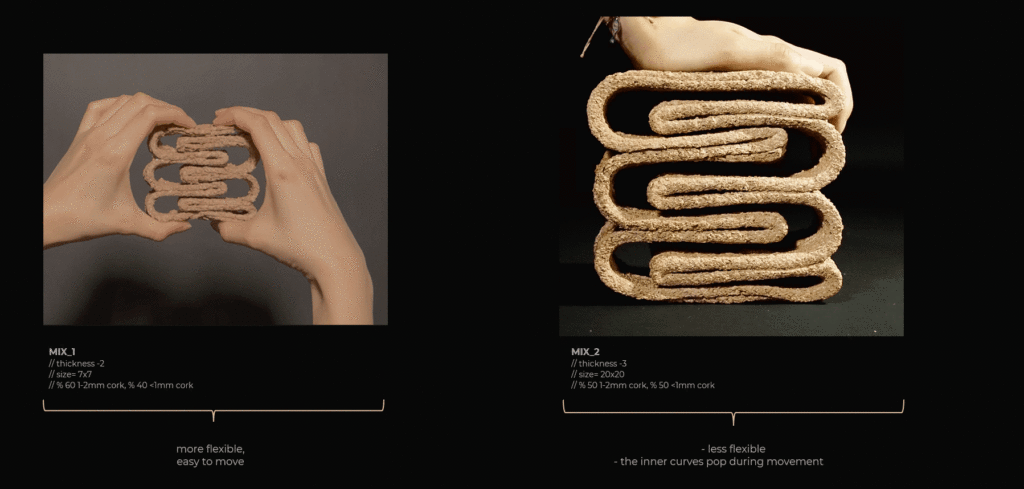
3rd Term
# Workflow
